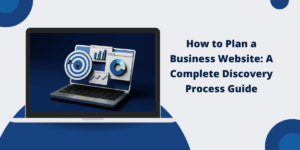Cloud computing is so much more than a tech buzzword anymore. It’s the foundation of how today’s companies run. As the digital shift quickens, one clear fact emerges: security comes first. 2025 is a turning point for cloud protection. Organizations that used to favor rapid growth and bigger systems now see that user trust and safety count equally. Data deserves hardened defenses. These days, grasping and shoring up cloud security isn’t optional – it’s how you survive.
The Surge in Cloud Adoption
Organizations have adopted cloud-based solutions over the past few years. This is primarily due to the factors of their flexibility and cost efficiency. As work, learning, and daily tasks move online, storing and accessing files through the cloud has become essential rather than optional. This shift has also changed expectations for websites in general – people want faster loading, better uptime, and smoother online experiences. That’s one reason many site owners look for the best WordPress web hosting providers, since the right hosting environment directly affects performance and the way online services handle data. These rising expectations highlight why stronger cloud practices and data protection standards matter for everyone.
Evolving Threats and Attack Techniques
Cybercriminals never stop learning. And neither should we. Their tactics have expanded. Weak passwords, outdated software, and unpatched systems invite trouble right now. Some hackers even use advanced malware. Your security team must patch systems, run regular tests, and shift tactics as quickly as attackers do.
Regulatory Demands and Compliance Needs
Digital privacy laws have been tightened worldwide. Governments and regulatory bodies want personal and business data to remain protected. Ignoring it can lead to steep fines and serious brand damage. Both cloud providers and their customers have a part to play in keeping up with evolving regulations. It’s also essential to earn the trust of the people who depend on your security.
Growing Data Volumes and Sensitivity
The amount of information stored online is expected to continue growing annually. Sensitive customer information, intellectual property, and other confidential business strategies have now migrated to virtual locations. However, if this is such an immense and valuable dataset, it requires something more than standard security. To prevent unauthorized access or leaks, sophisticated encryption and access controls must be implemented to ensure compliance with relevant regulations.
Shared Responsibility in Securing Data
Cloud security requires collaboration. It is a shared effort between providers and users. Security in the cloud is vital. Providers include built-in safeguards. However, customers must configure and manage their resources with security in mind. A clear understanding of these collective responsibilities helps mitigate the loopholes that attackers can exploit.
Rising Costs of Data Breaches
Financial losses due to security incidents continue to rise. Direct losses result from stolen assets or operational disruptions. Indirect costs are caused by reputational damage and lost business opportunities. Pay a bit now for prevention and you’ll spend less over time. They are better than trying to connect the dots after a breach has occurred. Organizations that prioritize protection will consequently evade these costly outcomes.
Advanced Security Technologies
Modern threats call for modern defenses. Artificial intelligence and machine learning are now key players in spotting danger before it strikes. These tools can sift through massive amounts of data. They recognize suspicious activity. They also flag issues faster than any human team could. Additionally, automation takes over repetitive security tasks. Combining these advanced tools with smart human oversight offers benefits. Organizations can react to threats in real time and keep sensitive data safer than ever.
Effects of Zero Trust Models
Zero Trust turns the old security mindset upside down. It won’t trust users or devices simply because they’re inside the system. It treats everyone like a potential risk until proven otherwise. This paradigm requires continual validation before granting access to assets. Minimized implicit trust means that the risks of an external or internal app gaining a foothold are significantly diminished. Embracing zero-trust principles sharply improves overall security.
Identity and Access Management
One of the most critical components of any strategy for protecting online resources is user identity and permission management. Biometrics and multi-factor authentication are examples of strong authentication methods. These are often used to help ensure only authorized individuals have access to sensitive resources. Additionally, maintaining frequent vigilance and updating permissions helps further reduce the risk of unauthorized entry.
Encryption: Safeguarding Data
Think of encryption as your data’s bodyguard, protecting your emails and photos. It turns information into a code that means nothing to anyone who isn’t supposed to read it. Whether files are parked in storage or shuttled across networks, encryption locks them down so prying eyes can’t read them. Only those with the right decryption key can turn that jumble of symbols back into something readable. It’s one of the simplest ways to protect valuable information from theft or tampering. You can’t treat strong encryption as optional. Any business serious about security needs it.
Constant Monitoring and Threat Detection
Spotting trouble early can save a lot of pain later. That’s where keeping a round-the-clock eye on things and spotting trouble before it hits you. This can be done by monitoring for unusual behavior, such as tracking unexpected logins or unusual data movements. Organizations can catch potential attacks before they explode into full-blown disasters. Automated alerts enable security teams to respond quickly. They cut off threats in real time. This hands-on monitoring keeps systems a step ahead, shifting reactive security into proactive defense.
Employee Awareness and Training
Many major security incidents still trace back to human error. Through education, staff can identify common threats, including phishing attempts or social engineering tactics. Push simple practices – locking your screen, verifying links, pausing before clicking – and you’ll prevent almost all breaches born of mistakes. Smart teams become the first line of defense.
Cloud Ecosystem and Supply Chain Risks
Third-party vendors and partners are often integral to organizations if they provide specialized services. Every connection creates another risk. So, a breach in one place can lead to exposure in another. Assessing the security practices of all entities in the supply chain is critical. This is the only way to ensure a secure environment. Attentive supervision plays a crucial role. It prevents the exploitation of vulnerabilities by interconnected systems.
Disaster Recovery and Business Continuity
Every company hopes nothing ever goes wrong. A strong disaster recovery plan is like a safety net for your digital world. Backups sitting somewhere won’t save you on their own. You have to know, step by step, how to recover and restart when systems fail. Backups, clear runbooks, and hardened safeguards often decide whether an outage is a brief interruption or an organization-wide emergency. The key is to keep those plans fresh. Audit and validate them on a schedule, revising configurations as your systems evolve. Recovery rebuilds corrupted file structures and retrieves deleted data.
Balancing Accessibility and Protection
People need quick access to do their work, but that very access can invite trouble. When we pile on rules, we all lag; when we cut them back, we open ourselves to risk. The sweet spot sits somewhere in between. That’s why security rules need to shift with threats, not sit frozen. They need to adapt as your team and tech change. Regular reviews and smarter permissions are essential. Also, flexible tools help keep data safe without creating constant roadblocks.
Future Trends in Cloud Security
Cloud security will see quantum-resistant encryption. There will be improved behavioral analytics and decentralized management of identities. Cyber threats are constantly evolving. As a result, understanding these developments will be crucial. It helps organizations persistently prepare for what lies ahead.
Collaboration Across Industries
No single entity can combat every threat on its own. Mutual knowledge of new threats is vital. Effective defense strategies are beneficial for all. The industry alliances and public-private partnerships promote a banded front in the face of security threats. Collaboration builds resiliency. It raises the baseline of protection.
The Role of Automation
There are now tons of automated tools that make defense faster and less painful. Automation eases the burden on human teams. Automation handles vulnerability scanning and incident response orchestration. It also helps organizations address and respond to threats more quickly. Automation in security practice provides speedier and more reliable security.
Cloud Security for Small Businesses
Smaller businesses face different challenges. They adapt. These are often undermined by a lack of sufficient security resources to defend. But regardless of size, online threats do not discriminate. Budget-friendly options are here. Included are managed services – like 24/7 support – and intuitive tools. Building a workplace that values awareness matters whether you lead a multinational firm or a neighborhood shop.
Customer Trust and Brand Reputation
Safeguarding your clients’ information is imperative to retaining their trust. Often, security breaches may not make the headlines. However, they can erode confidence and damage reputations. Taking explicit measures to protect data makes clients feel more assured that their data is in good hands. Safeguarding personal information creates loyalty. It also strengthens the foundation of a long-lasting business.
Cloud Security Certifications
Cloud security certifications serve as validation of proficiency in securing online platforms. These credentials help organizations identify proficient personnel. It also helps reassure their clients about safety standards. Promoting continuous improvement is a must. Staff must be encouraged to pursue ongoing education and certification. This equips the security team with up-to-date best practices they can act on immediately.
Environmental Considerations
Today, organizations are taking steps towards sustainability. Online operations can create opportunities to reduce reliance on physical infrastructure. Every data center powering our digital lives consumes a massive amount of energy. Efficient security mechanisms cut energy waste and reduce carbon impact. Security teams are learning that sustainability and protection don’t have to compete. They can work hand in hand.
Conclusion
Cloud security is no longer a luxury; it is a necessity today. As threats accelerate, our defenses need to keep up – and get smarter. More organizations are moving their data, operations, and even customer interactions online. This is giving rise to the need for smarter, adaptive protection that keeps growing. Investing in secure cloud practices today means fewer sleepless nights tomorrow. In 2025 and beyond, the question concerning cloud security is how ready you are to face what’s coming.

Priya Mervana
 Verified Web Security Experts
Verified Web Security Experts
Priya Mervana is working at SSLInsights.com as a web security expert with over 10 years of experience writing about encryption, SSL certificates, and online privacy. She aims to make complex security topics easily understandable for everyday internet users.



